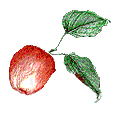| Home | Cookbook Menu |
 Earthnotes Cookbook
Earthnotes Cookbook
| Home | Cookbook Menu |
 Earthnotes Cookbook
Earthnotes Cookbook
| Ingredients | ||
|---|---|---|
| 6 lb shin and marrow bones 4 quarts of cold water 6 black peppercorns 4 whole cloves |
1 bay leaf 1 tsp thyme 1 tbsp parsley 1 large carrot (diced) |
3 stalks celery (diced) 1 cup fresh tomatoes 1 medium onion (diced) 1 tsp sugar |
| Ingredients | ||
|---|---|---|
| 1 egg 1 tbsp apple cider vinegar ½ tsp dry mustard |
¼ tsp paprika ½ tsp salt 1/8 tsp cayenne |
1 tbsp honey 1 cup safflower oil (divide into two portions of 1/2 cup each) 1 tbsp lemon juice |
| Ingredients |
|---|
| 1 cup fresh coconut (coarsely chopped) 1 cup hot water |
| Ingredients |
|---|
| 3/4 cup sugar ½ cup warm water 1 cup plus 2 tbsp of powdered skim milk |
| November 1998: More about vinegar from Dee Stewart, Oregon Our word vinegar comes from the French "vinaigre". Vin for wine and aigre for sour. |